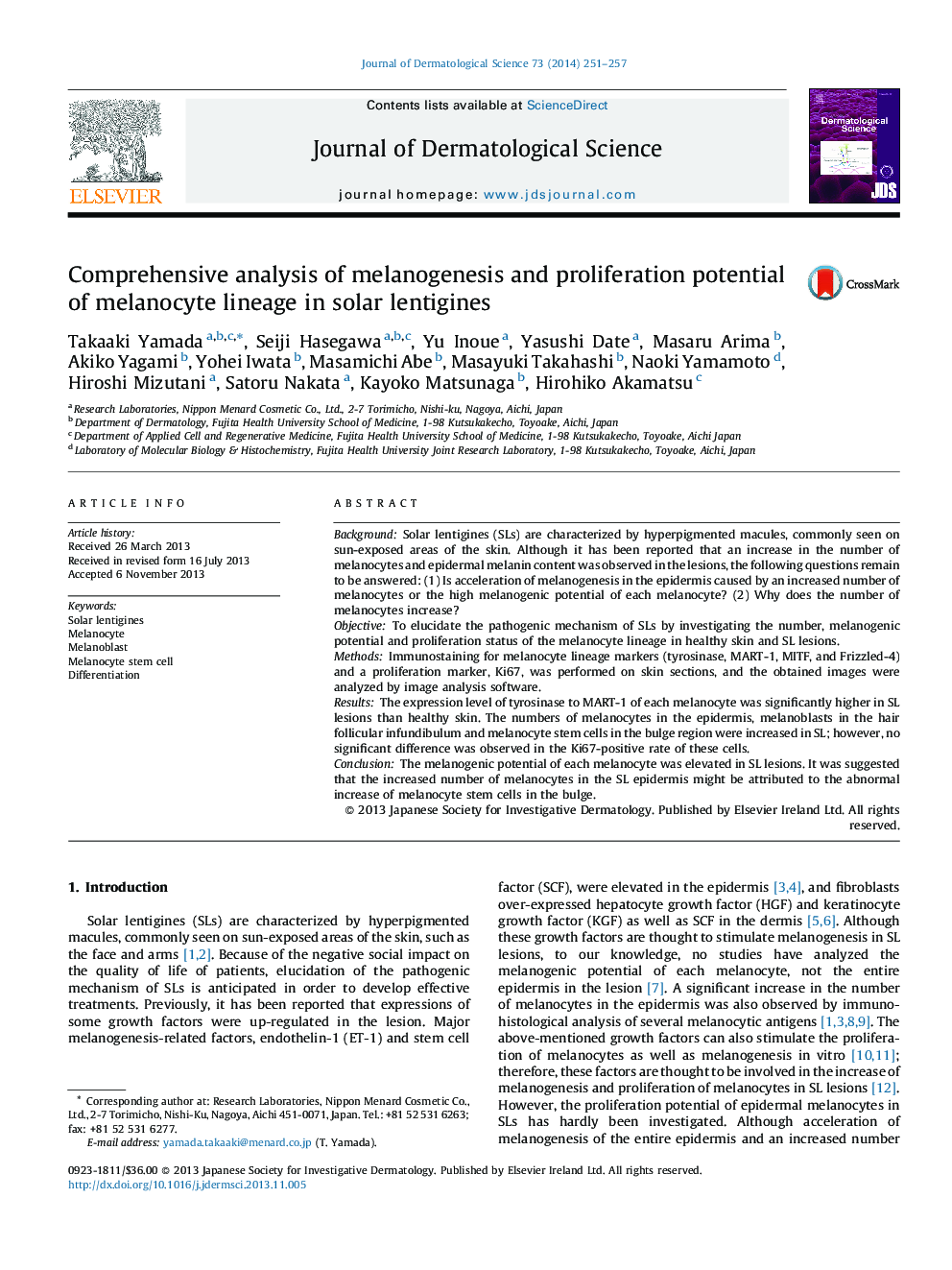| Article ID | Journal | Published Year | Pages | File Type |
|---|---|---|---|---|
| 3212790 | Journal of Dermatological Science | 2014 | 7 Pages |
BackgroundSolar lentigines (SLs) are characterized by hyperpigmented macules, commonly seen on sun-exposed areas of the skin. Although it has been reported that an increase in the number of melanocytes and epidermal melanin content was observed in the lesions, the following questions remain to be answered: (1) Is acceleration of melanogenesis in the epidermis caused by an increased number of melanocytes or the high melanogenic potential of each melanocyte? (2) Why does the number of melanocytes increase?ObjectiveTo elucidate the pathogenic mechanism of SLs by investigating the number, melanogenic potential and proliferation status of the melanocyte lineage in healthy skin and SL lesions.MethodsImmunostaining for melanocyte lineage markers (tyrosinase, MART-1, MITF, and Frizzled-4) and a proliferation marker, Ki67, was performed on skin sections, and the obtained images were analyzed by image analysis software.ResultsThe expression level of tyrosinase to MART-1 of each melanocyte was significantly higher in SL lesions than healthy skin. The numbers of melanocytes in the epidermis, melanoblasts in the hair follicular infundibulum and melanocyte stem cells in the bulge region were increased in SL; however, no significant difference was observed in the Ki67-positive rate of these cells.ConclusionThe melanogenic potential of each melanocyte was elevated in SL lesions. It was suggested that the increased number of melanocytes in the SL epidermis might be attributed to the abnormal increase of melanocyte stem cells in the bulge.
